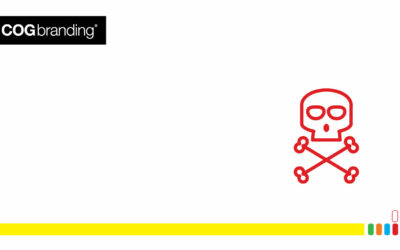COG Branding is all about SME’s and ensuring they pursue the SMART methods in achieving business growth.
There is a saying that old time business leaders bang on about – ‘if you fail to plan, you are planning to fail’.
Though to be honest – there has never been more relevance in this term as it is in today’s volatile and competitive pandemic riddled business environment, where change is constant and competition is as fierce as its ever been.
Its widely accepted that planning provides a valuable focus for a business, and gels people together and gets them headed in the right direction – many businesses still continue to overlook the importance of business planning.
A recent statistic of Australian businesses has shown that 77% of Australian businesses don’t have a strategic plan in place. This is likely to be the main contributor to high failure rates among Australian businesses in their early years, in particular, small to medium-sized operations (SME’s – the specialty for COG Branding).
Many SME businesses don’t know how to start or complete business and brand planning, so you can easily Google the best Sydney branding agency and you’ll find a great supplier for brand and business planning. A third party is often a great way to get things going and show you the ropes on how to plan, execute and manage this type of task.
Planning is very important for an SME – but Why?
Strategic Planning provides focus and direction to your business, a strong plan helps you clearly identify your business goals and how the business owner and its team will set about achieving them. A good plan also allows the business to consider all the potential resourcing issues and roadblocks it may face along the way, at the same time.
A business plan is delivers an opportunity for the board, the business owner and the team to step back and look at what’s actually working in the business, and what can be improved on. An SEM that involves its employees in the planning process is statistically better at staff retention and is also another great way to gain valuable insights.
Its key to note that strategic planning is also going to be vital when seeking finance for your business. Lenders and investors aren’t going to risk their time and money if you don’t have a roadmap showing how you’re going to be successful and profitable.
How often should you plan?
Ideally, planning should be done prior any important decisions are made. From here, it should be executed on an annual basis, so the business is continually in review mode and never going blind. A broader steering committee can ensure the following 12 months post-review meet objectives, as well as re-setting any goals that may assist the business focus for the next year.
A great time to commence planning and build a business strategy is the start of a new financial year. Undertaking planning and reviewing how the business performed – what worked well and what didn’t at this time is smart, the numbers don’t ever life. Here we can see if the business remained on track with your previous year’s goals? What threats and opportunities arose during the previous year and so on.
A traditional SWOT never goes out of style and is always high in function. Undertaking this type of analysis of a businesses’ strengths, weaknesses, opportunities and threats will help the business create specific and measurable goals. The business doesn’t have to come up with a long list of items for each, but a neat ten key points under each of the main headers will give the business a clear snapshot of the landscape for the business in the next 12 months.
Think SMART
The next step is to undertake a structured approach to developing your business goals for the next 12 months. There’s no point putting in place business goals that are broad, ambiguous and hard to measure, or worse still, unachievable.
Developing business goals using the acronym SMART ensures you are thinking more carefully and methodically about what you want to achieve, and the goals are realistic. It’s also a good idea to seek input or feedback from your employees on the business goals you develop, ensuring they have buy-in and feel motivated to work towards them.
Here’s the main things to consider when using SMART business planning.
1. Specific
If you set specific goals, there’s a higher chance you will be successful in achieving them. Clearly define your goals by asking:
What do I want to achieve?
Why is this goal important and what are the benefits of accomplishing the goal?
Who will be doing what to ensure the goal is achieved?
Where will the goal be carried out?
2. Measurable
Ensuring your goal is measurable will enable you to track your progress towards it, as well as know when it’s been achieved. Define a benchmark so that you know when your goal has been accomplished: Some questions to ask include:
What are the sales and conversion targets?
Are there other areas you can measure like enquiry levels, market share, or add-on sales?

3. Achievable
Your business goals need to be achievable, otherwise it will be hard to ensure you and your team remain motivated to achieve them. In particular, consider the costs -especially if you are a small business – by asking:
Do I have the resources to achieve the goal?
Do I have staff with the capability to achieve the goal?
Do I need to hire more staff?
4. Relevant
To ensure your business goals are relevant, choose goals that are meaningful to you and your business and that are achievable in the current business climate. Ask yourself some tough questions, including:
Is it worth the costs and resources required?
Is this the right time to be doing it?
Is it in alignment with other goals?
5. Time-bound
It’s important that the business goals you come up with have a time frame for completion, which will establish a focus and sense of urgency. Consider breaking each goal down into a more manageable time frame:
What can I do today?
What can I do in two weeks time?
What can I do in a month’s, two months and six months time?
Planning is critical to the success of any operation in today’s competitive business environment. Using the SMART framework when you next plan will ensure you’ll avoid wasted time and energy chasing goals that are unrealistic or unattainable.


